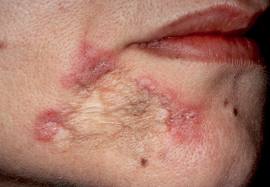Hormones and Treatment
Hormones used for medical treatment are obtained from several different sources. Some are extracted from animal tissues. Some hormones and hormonelike substances are available in synthetic form, meaning that they are manufactured in commercial laboratories. A few hormones are produced by the genetic engineering technique of recombinant DNA. In this method, a gene for the cellular manufacture of a given product is introduced in the laboratory into the common bacterium Escherichia coli. The organisms are then grown in quantity, and the desired substance is harvested and purified. A few examples of natural and synthetic hormones used in treatment are:
* Growth hormone is used for the treatment of children with a deficiency of this hormone. It is also used to strengthen bones and build body mass in the elderly. Adequate supplies are available from recombinant DNA techniques.
* Insulin is used in the treatment of diabetes mellitus. Types of insulin available include “human” insulin produced by recombinant DNA methods and hormone obtained from animal pancreases.
* Adrenal steroids, primarily the glucocorticoids, are used for the relief of inflammation in such diseases as rheumatoid arthritis, lupus erythematosus, asthma, and cerebral edema; for immunosuppression after organ transplantation; and for relief of symptoms associated with circulatory shock.

Growth hormone

Insulin

Lupus
* Epinephrine (adrenaline) has many uses, including stimulation of the heart muscle when rapid response is required, treatment of asthmatic attacks by relaxation of the small bronchial tubes, and treatment of the acute allergic reaction called anaphylaxis.
* Thyroid hormones are used in the treatment of hypothyroid conditions (cretinism and myxedema) and as replacement therapy after surgical removal of the thyroid gland.
* Oxytocin is used to cause contractions of the uterus and induce labor.
* Androgens, including testosterone and androsterone, are used in severe chronic illness to aid tissue building and promote healing.
* Thyroid hormones are used in the treatment of hypothyroid conditions (cretinism and myxedema) and as replacement therapy after surgical removal of the thyroid gland.
* Oxytocin is used to cause contractions of the uterus and induce labor.
* Androgens, including testosterone and androsterone, are used in severe chronic illness to aid tissue building and promote healing.
* Estrogen and progesterone are used as oral contraceptives (birth control pills; “the pill”). They are highly effective in preventing pregnancy. Occasionally, they give rise to unpleasant side effects, such as nausea. More rarely, they cause serious complications, such as thrombosis (blood clots) or hypertension (high blood pressure). These adverse side effects are more common among women who smoke. Any woman taking birth control pills should have a yearly medical examination.
Preparations of estrogen and progesterone have been used to treat symptoms associated with menopause and protect against adverse changes that occur after menopause. Recent studies on the most popular form of these hormones have raised questions about their benefits and revealed some risks associated with their use. This issue is still under study.
Preparations of estrogen and progesterone have been used to treat symptoms associated with menopause and protect against adverse changes that occur after menopause. Recent studies on the most popular form of these hormones have raised questions about their benefits and revealed some risks associated with their use. This issue is still under study.
Hormones and Stress
Stress in the form of physical injury, disease, emotional anxiety, and even pleasure calls forth a specific response from the body that involves both the nervous system and the endocrine system. The nervous system response, the “fight-or-flight” response, is mediated by parts of the brain, especially the hypothalamus, and by the sympathetic nervous system, which releases epinephrine. During stress, the hypothalamus also triggers the release of ACTH from the anterior pituitary. The hormones released from the adrenal cortex as a result of ACTH stimulation raise the levels of glucose and other nutrients in the blood and inhibit inflammation. Growth hormone, thyroid hormones, sex hormones, and insulin are also released. These hormones help the body meet stressful situations. Unchecked, however, they are harmful to the body and may lead to such stress-related disorders as high blood pressure, heart disease, ulcers, back pain, and headaches.
Cortisones decrease the immune response, leaving the body more susceptible to infection. Although no one would enjoy a life totally free of stress in the form of stimulation and challenge, unmanaged stress, or “distress,” has negative effects on the body. For this reason, techniques such as biofeedback and meditation to control stress are useful. The simple measures of setting priorities, getting adequate periods of relaxation, and getting regular physical exercise are important in maintaining total health.
Aging and the Endocrine System
Some of the changes associated with aging, such as loss of muscle and bone tissue, can be linked to changes in the endocrine system. The main clinical conditions associated with the endocrine system involve the pancreas and the thyroid. Many elderly people develop adult-onset diabetes mellitus as a result of decreased secretion of insulin, which is made worse by poor diet, inactivity, and increased body fat. Some elderly people also show the effects of decreased thyroid hormone secretion. Sex hormones decline during the middle-aged years in both males and females. These changes come from decreased activity of the gonads but also involve the more basic level of the pituitary gland and the secretion of gonadotropic hormones. Decrease in bone mass leading to osteoporosis is one result of these declines. With age, there is also a decrease in growth hormone levels and diminished activity of the adrenal cortex. Thus far, the only commonly applied treatment for endocrine failure associated with age has been sex hormone replacement therapy for women at menopause. This supplementation has shown some beneficial effects on mucous membranes, the cardiovascular system, bone mass, and mental function.
Aging and the Endocrine System
Some of the changes associated with aging, such as loss of muscle and bone tissue, can be linked to changes in the endocrine system. The main clinical conditions associated with the endocrine system involve the pancreas and the thyroid. Many elderly people develop adult-onset diabetes mellitus as a result of decreased secretion of insulin, which is made worse by poor diet, inactivity, and increased body fat. Some elderly people also show the effects of decreased thyroid hormone secretion. Sex hormones decline during the middle-aged years in both males and females. These changes come from decreased activity of the gonads but also involve the more basic level of the pituitary gland and the secretion of gonadotropic hormones. Decrease in bone mass leading to osteoporosis is one result of these declines. With age, there is also a decrease in growth hormone levels and diminished activity of the adrenal cortex. Thus far, the only commonly applied treatment for endocrine failure associated with age has been sex hormone replacement therapy for women at menopause. This supplementation has shown some beneficial effects on mucous membranes, the cardiovascular system, bone mass, and mental function.

Contacts: lubopitno_bg@abv.bg www.encyclopedia.lubopitko-bg.com Corporation. All rights reserved.
DON'T FORGET - KNOWLEDGE IS EVERYTHING!